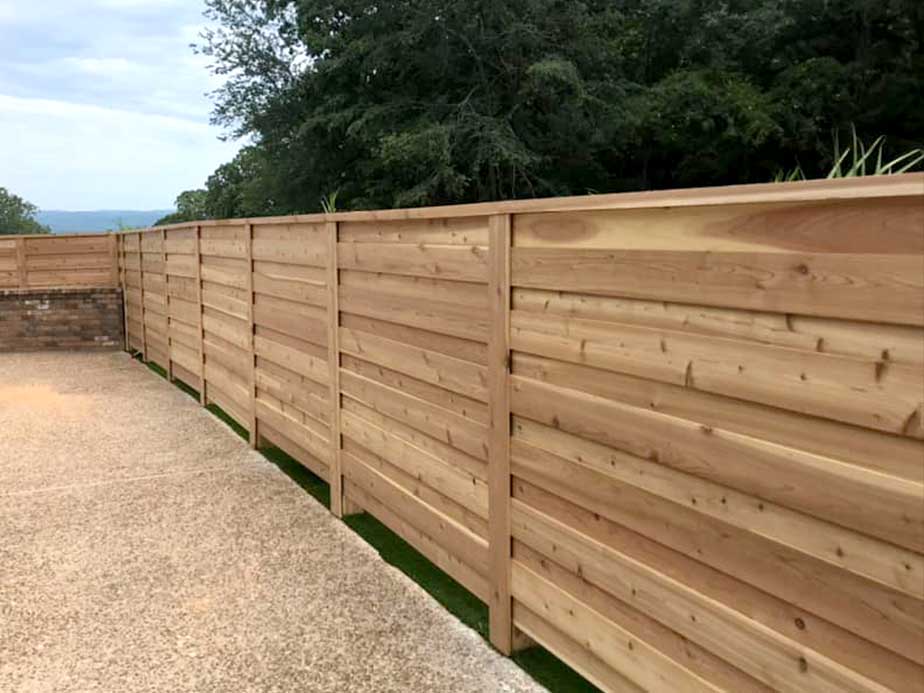All Categories
Featured
Setting up a fence around your residential or commercial property can enhance privacy, protection, and visual appeals. Prior to obtaining started, it's vital to identify whether you require an authorization for the installation. Different locations have differing laws, and understanding what's called for will help ensure that your fence is legal, secure, and constructed according to neighborhood criteria. Right here's an overview to aid you browse the allowing procedure for fence installment.
Why Are Allows Required? Authorizations are required to ensure that the installation of your fence meets neighborhood building ordinance and zoning laws. These regulations are in area to maintain the security, look, and functionality of homes in your area. Additionally, permits assistance avoid conflicts with neighbors concerning home lines, fence elevation, and various other structural details.
Neighborhood authorities need licenses to check points like visibility at crossways, public safety, and prospective damages to energies like pipes or electrical lines. The procedure assists keep your fence project compliant with security and lawful standards.
Kinds Of Authorizations You May Require. The exact licenses required can vary relying on your area and the specifics of your project. Below are the most common kinds of authorizations you might require:
Building Authorization. Many cities and counties call for a structure license for fencings that surpass a particular elevation, normally over 6 feet. This permit makes certain that your fence follows structural standards, especially if it's made from certain materials such as concrete, metal, or block. Structure permits are likewise required when your fencing affects the general landscape, like developing an or obstructing a sightline.
Zoning Permit. Zoning authorizations are provided to guarantee that your fence follows regional zoning regulations. These regulations might manage where fencings can be positioned on your building (e.g., front, side, or yard), just how high they can be, and whether they can be set up near pathways or roads. Zoning laws are placed in area to preserve the overall appearances of areas and keep web traffic safety and security.
Obstacle License. Some locations have setback policies that determine exactly how much a fence has to be from the residential or commercial property line, roadway, or specific public rooms. Trouble licenses are made to ensure that your fencing does not hinder surrounding residential or commercial properties or public locations. A building survey may be needed to verify home lines before obtaining this sort of authorization.
HOA Authorization. If you stay in a community regulated by a Homeowners Organization (HOA), you might require to get authorization from the HOA prior to installing a fence. HOAs often have stringent standards concerning the sort of fencing allowed in the neighborhood, including its product, height, and color. Always get in touch with the HOA prior to beginning your task to avoid any kind of disputes.
Just How to Look For a Fence Authorization. The procedure for getting an authorization normally includes numerous actions:
Research Study Citizen Regulations. Start by examining your city or area's internet site to discover out the certain requirements for fence installation. You may need to check out the regional preparation or structure division personally for more thorough information.
Prepare Your Application. Most cities will certainly need an application kind, that includes information about your intended fencing, such as:
![]()
The sort of fencing material (wood, plastic, chain-link, etc) The intended height of the fence. The place and measurements of the fence. A residential property survey (to confirm home lines) Submit the Application. After finishing the application, send it to the local building or zoning workplace. You may be needed to pay a fee relying on your location and the dimension of your fence. Costs can vary, but they usually cover the price of processing your request and evaluating your plans.
Wait On Authorization. When your application is sent, the local authorities will certainly assess your strategies to guarantee they satisfy zoning and building requirements. This procedure can take anywhere from a few days to several weeks, depending upon the intricacy of the job and the quantity of permit demands in your area.
![]()
If Necessary),Assessment (. In many cases, you may require to set up an examination after the fence is mounted to guarantee it fulfills the called for standards. If this action is essential., your neighborhood office will allow you know.
When You Don't Required a Permit,. Not every fence installation needs a permit. Some scenarios where you might not need a permit consist of:
Mounting a fence that's under a certain elevation (commonly 3-4 feet for front lawns) Replacing an existing fence with one that is the exact same elevation and material. Setting up a temporary fence (e.g., for building and construction or horticulture) Even if your task seems small, it's always recommended to inspect with regional authorities to make sure you're adhering to the appropriate process.
Repercussions of Not Getting a License. Setting up a fencing without the necessary license can lead to significant effects, consisting of penalties, elimination of the fence, and costly reinstallation. In many cases, regional authorities might need you to change the fencing if it does not fulfill code needs. Additionally, not getting a license might create disputes with next-door neighbors, especially if the fence is positioned inaccurately or breaks local elevation laws.
Conclusion. Before installing a fence, it's vital to investigate the specific allowing demands in your location. If a license is needed and to ensure that you're following the correct procedure, call your neighborhood structure or zoning department to discover out. By protecting the correct permits, you'll stay clear of legal concerns and make sure that your fence setup is secure, certified, and convenient.
Why Are Allows Required? Authorizations are required to ensure that the installation of your fence meets neighborhood building ordinance and zoning laws. These regulations are in area to maintain the security, look, and functionality of homes in your area. Additionally, permits assistance avoid conflicts with neighbors concerning home lines, fence elevation, and various other structural details.
Neighborhood authorities need licenses to check points like visibility at crossways, public safety, and prospective damages to energies like pipes or electrical lines. The procedure assists keep your fence project compliant with security and lawful standards.
Kinds Of Authorizations You May Require. The exact licenses required can vary relying on your area and the specifics of your project. Below are the most common kinds of authorizations you might require:
Building Authorization. Many cities and counties call for a structure license for fencings that surpass a particular elevation, normally over 6 feet. This permit makes certain that your fence follows structural standards, especially if it's made from certain materials such as concrete, metal, or block. Structure permits are likewise required when your fencing affects the general landscape, like developing an or obstructing a sightline.
Zoning Permit. Zoning authorizations are provided to guarantee that your fence follows regional zoning regulations. These regulations might manage where fencings can be positioned on your building (e.g., front, side, or yard), just how high they can be, and whether they can be set up near pathways or roads. Zoning laws are placed in area to preserve the overall appearances of areas and keep web traffic safety and security.
Obstacle License. Some locations have setback policies that determine exactly how much a fence has to be from the residential or commercial property line, roadway, or specific public rooms. Trouble licenses are made to ensure that your fencing does not hinder surrounding residential or commercial properties or public locations. A building survey may be needed to verify home lines before obtaining this sort of authorization.
HOA Authorization. If you stay in a community regulated by a Homeowners Organization (HOA), you might require to get authorization from the HOA prior to installing a fence. HOAs often have stringent standards concerning the sort of fencing allowed in the neighborhood, including its product, height, and color. Always get in touch with the HOA prior to beginning your task to avoid any kind of disputes.
Just How to Look For a Fence Authorization. The procedure for getting an authorization normally includes numerous actions:
Research Study Citizen Regulations. Start by examining your city or area's internet site to discover out the certain requirements for fence installation. You may need to check out the regional preparation or structure division personally for more thorough information.
Prepare Your Application. Most cities will certainly need an application kind, that includes information about your intended fencing, such as:

The sort of fencing material (wood, plastic, chain-link, etc) The intended height of the fence. The place and measurements of the fence. A residential property survey (to confirm home lines) Submit the Application. After finishing the application, send it to the local building or zoning workplace. You may be needed to pay a fee relying on your location and the dimension of your fence. Costs can vary, but they usually cover the price of processing your request and evaluating your plans.
Wait On Authorization. When your application is sent, the local authorities will certainly assess your strategies to guarantee they satisfy zoning and building requirements. This procedure can take anywhere from a few days to several weeks, depending upon the intricacy of the job and the quantity of permit demands in your area.

If Necessary),Assessment (. In many cases, you may require to set up an examination after the fence is mounted to guarantee it fulfills the called for standards. If this action is essential., your neighborhood office will allow you know.
When You Don't Required a Permit,. Not every fence installation needs a permit. Some scenarios where you might not need a permit consist of:
Mounting a fence that's under a certain elevation (commonly 3-4 feet for front lawns) Replacing an existing fence with one that is the exact same elevation and material. Setting up a temporary fence (e.g., for building and construction or horticulture) Even if your task seems small, it's always recommended to inspect with regional authorities to make sure you're adhering to the appropriate process.
Repercussions of Not Getting a License. Setting up a fencing without the necessary license can lead to significant effects, consisting of penalties, elimination of the fence, and costly reinstallation. In many cases, regional authorities might need you to change the fencing if it does not fulfill code needs. Additionally, not getting a license might create disputes with next-door neighbors, especially if the fence is positioned inaccurately or breaks local elevation laws.
Conclusion. Before installing a fence, it's vital to investigate the specific allowing demands in your location. If a license is needed and to ensure that you're following the correct procedure, call your neighborhood structure or zoning department to discover out. By protecting the correct permits, you'll stay clear of legal concerns and make sure that your fence setup is secure, certified, and convenient.
Latest Posts
Washington Fence: Crafting Long-Lasting, Top Quality Secure Fencing Solutions
Published Nov 22, 24
0 min read
Choosing the Right Wood Type for Custom Furniture
Published Nov 22, 24
1 min read
Discovering Payment Alternatives and Financing Prepare For Significant Auto Repair Works
Published Nov 22, 24
0 min read
More
Latest Posts
Washington Fence: Crafting Long-Lasting, Top Quality Secure Fencing Solutions
Published Nov 22, 24
0 min read
Choosing the Right Wood Type for Custom Furniture
Published Nov 22, 24
1 min read
Discovering Payment Alternatives and Financing Prepare For Significant Auto Repair Works
Published Nov 22, 24
0 min read